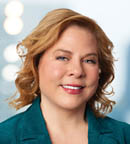Data from ophthalmic professional organizations provide valuable guidance on optimizing staffing.
Ophthalmology practices are in constant pursuit of improved efficiency and outstanding patient care. A pivotal element in this pursuit is having an adept and efficient clinical team. Determining the right number and structure of clinical staff often poses questions for many physicians. To assist with these questions, efficiency benchmarks have been set to provide standards for patient workups and throughput.
Unpacking the benchmarks
In 2009, Eyetechs, BSM Consulting and the American Society of Ophthalmic Administrators conducted a joint survey to study the time taken by ophthalmic technicians for each step of the workup process. Their findings have since guided numerous practices in estimating technician time with patients based on the specific exam elements.
A follow-up survey in 2015 aimed to capture any changes introduced with the adoption of electronic health records (EHR). This survey, which comprised 79 practices across various subspecialties and included 6,319 patient workups, showed that a proficient technician ideally handles 3 to 4 patients every hour (Table 1). (It’s worth noting that these metrics do not account for diagnostic tests such as OCT, visual fields, IOLMaster or other specialty tests.)

Tailoring staffing to physician preferences
Even with established data on technician efficiency, individual variability mandates customization. The emphasis in staffing analysis has moved towards accommodating individual physician preferences and procedures. To optimize staffing, consider the following:
- Proportional schedules: It’s crucial to align the technician team with the patient schedule. Overloading can result in the team falling behind.
- Technician training: The growth trajectory of the eye-care industry indicates the need for nearly 8,900 additional technicians by 2028.1-4 Training technicians efficiently is the need of the hour. Initiatives such as week-long boot camps and eLearning modules can fast-track their proficiency. Remember, only well-trained staff can handle patient workups efficiently.
- Volume-based staffing: Base clinical staffing on average patient volumes. Ensure that the number of technicians aligns with the number of patients scheduled.
- Room availability: Ensuring clinical efficiency also involves having an open room for every technician to tend to the next patient. The absence of a dedicated workup space might make technicians wait, leading to inefficiencies.
- Scribes: For physicians employing scribes, the primary aim should be to have the scribe continuously accompany the physician. If a scribe is multitasking with other office responsibilities, such as surgical counseling, the scribe might miss portions of the exam or crucial details for chart documentation. Ideally, a dedicated scribe should assist with about six patients per hour, documenting findings and electronically submitting prescriptions. If the physician handles more than this number or the scribe has additional duties, considering an additional scribe becomes essential.
Case study: Retina staffing needs
Let’s explore a case study centered on the staffing needs of a retina doctor:
1. Defining exam elements: A retina doctor’s workup may include specific tasks with estimated time allocations (Table 2), such as:
- Patient history: 2.5 minutes
- Visual acuity: 2 minutes
- Pressure with handheld tonometer: 1 minute
- Dilation: 1 minute
- OCT: 4.5 minutes
- Walking/Buffer time: 1.5 minutes
- Complex patient/mobility challenges: 1 minute (Not every patient falls under this category, hence the minute allocation.)

2. Using the defined times, the average workup time is calculated to be
13.5 minutes, allowing approximately 4.5 patients per hour for a skilled technician.
3. Always account for buffer time.
4. Based on the above, daily goals can be set: 31 patients in an 8-hour shift or 16 for half a day.
5. Adjust if the team includes a new technician, as they will likely need more time to work up patients.
For specific tasks, such as aiding in retina injection setup, staffing adjustments should be made accordingly.
Conclusion
For ophthalmology practices aiming to deliver optimal patient care and maintain a seamless workflow, customizing the staffing strategy to specific needs is imperative. Employing benchmarks while catering to physician preferences ensures each patient benefits from timely and comprehensive care. OM
References
1. U.S. Bureau of Labor Statistics. Occupational employment and wage statistics. Occupational employment and wages, May 2022. 29-2057 Ophthalmic medical technicians. https://www.bls.gov/oes/current/oes292057.htm. Accessed Nov. 28, 2023.
2. U.S. Bureau of Labor Statistics. Employment projections. 29-2057 Ophthalmic medical technicians. https://data.bls.gov/projections/nationalMatrix?queryParams=29-2057&ioType=o. Accessed Nov. 28, 2023.
3. O Net Online. Ophthalmic Medical Technicians, 29-2057.00. https://www.onetonline.org/link/summary/29-2057.00. Accessed Nov. 28, 2023.
4. Careeronestop.org. Ophthalmic medical technicians. https://www.careeronestop.org/Toolkit/Careers/Occupations/occupation-profile.aspx?keyword=Ophthalmic%20Medical%20Technicians&location=US&onetcode=29-2057.00. Accessed Nov. 29, 2023.









